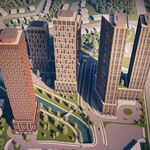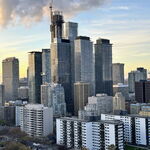AlvinofDiaspar
Moderator
Yes, but that load is split between two areas that are fairly distant. Here we're talking about one area absorbing 120,000 vehicles in addition to whatever amount runs along Lake Shore already (which is quite considerable from what I see)
Are you suggesting that the same restrictive conditions aren't present in SF, of all places that is known for traffic issues?
It's not the majority of the traffic, but it's been pointed out that it's still one of the major uses of it. You're throwing the baby out with the bathwater. I don't get the impression that any of you care, since I'm not supposed to be allowed to drive anyway
Major meaning what? You added this term - the numbers suggest otherwise. As to suggesting that any of us don't care because we don't live there...geez, isn't that a classic ad hominem? In addition, are you saying that decision making of this nature should be restricted to the select few who uses the roadway, instead of the majority of citizens who can benefit from the change?
Good, then we don't have to worry about burrying it.
Is that what passes for as constructive argument?
AoD




